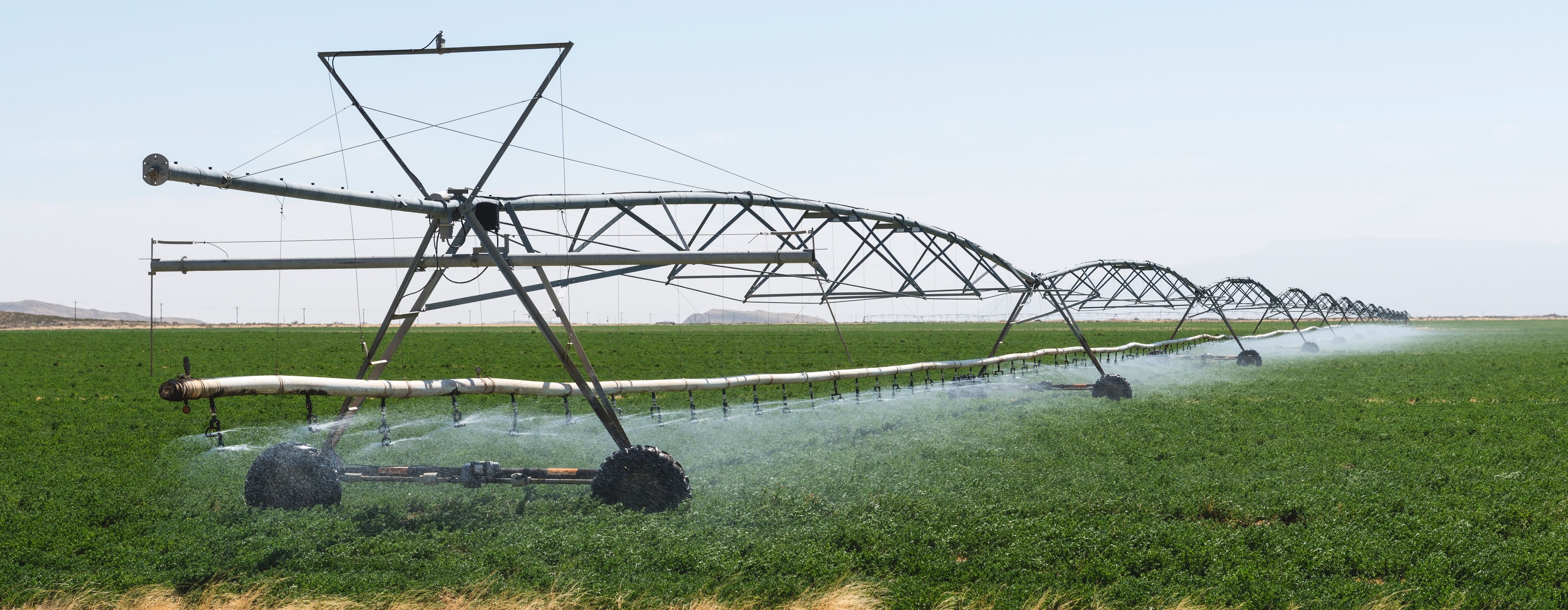Camden Smithtro is a Program Coordinator in the Pace Food Law Center and a guest contributor to this blog.
Three marker bills — the LAST ACRE Act, the ReConnecting Rural America Act (RRAA) and the Rural Internet Improvement Act (RIIA) — are in contention to define the focus of rural broadband programs in the upcoming Farm Bill. Each program is meant to help connect rural communities to high-speed internet and build off existing rural development programming that has been a fixture of the Farm Bill since the 1970s. This post provides an overview of the major marker bills that have emerged thus far, and advocates for the broadband and precision agriculture policies that will provide the most equitable and progressive rural broadband programs.
Broadband, or fixed high-speed internet, is essential in a country where employment, education, and healthcare increasingly rely on a reliable internet connection. In 2022, the FCC set a broadband standard of 25 megabits per second download speeds and 3 megabits per second upload speeds (25/3 Mbps), which is sufficient for common high-intensity uses like video conferencing. While mobile internet can provide a stop-gap, those who can purchase both mobile and broadband internet often do: fixed high-speed internet generally delivers faster speeds, lower costs, and higher data caps. However, 14.5 million Americans do not have access to broadband, including 17% of rural Americans and 21% of Americans living in Tribal areas. Still more have access but are unable to afford it.
Installing broadband in rural areas is prohibitively expensive and unprofitable for private companies, so the federal government funds ‘last mile’ and ‘middle mile’ programs that connect these unserved areas to existing lines. Since 2002, the Farm Bill authorizes the lion’s share of rural broadband grant and loan programs, which the USDA administers. These programs fund rural broadband infrastructure and technology projects. The largest, the ReConnect Program, funds the construction, improvement, or acquisition of facilities and equipment needed to provide rural broadband. Despite increasing the requirement for a project’s minimum broadband standard to 100 megabits per second download and upload (100 Mbps symmetrical), the program still received 3x more project proposals than it was able to fund. Other USDA strategies prioritize connecting community programs, such as schools and libraries, to broadband, or purchasing the technology needed to access telemedicine and distance learning.
In addition to providing rural broadband for households and communities in need, the 2018 Farm Bill directly tied broadband to agriculture with the establishment of a Precision Ag Connectivity Task Force. Precision agriculture relies on the analysis of large quantities of data collection to manage agricultural systems more precisely; improving tasks such as irrigation or the laying of seeds, pesticides, or fertilizer. Used well, it can allow farmers to increase crop yields, eliminate overlap in operations, and reduce inputs, but implementation frequently requires expensive equipment and internet connectivity. Congress designed the Precision Ag Connectivity Task Force to identify broadband gaps on farmland that impeded the implementation of precision ag, then write and promote policy recommendations that could fill those gaps.
Now in 2023, the Linking Access to Spur Technology for Agriculture Connectivity in Rural Environments (LAST ACRE) Act draws on the recommendations of the Precision Ag Connectivity Task Force. It proposes a Last Acre Program, which funds broadband expansion for the purpose of precision agriculture, cybersecurity protection for that broadband, and directs the USDA to include questions about broadband and precision agriculture in their next farmer Census. Additional Farm Bill marker bills highlight precision agriculture, such as the Promoting Precision Agriculture Act, which directs the USDA to develop standards and best practices for precision agriculture.
The ReConnecting Rural America Act (RRAA) and the Rural Internet Improvement Act (RIIA) seek to codify and clarify the USDA’s existing ReConnect program, both introduced with bipartisan support in the House and Senate. One of the most obvious differences between these two bills is how they define unserved regions: the RIIA maintains the 2022 definition of ‘unserved’ at 25/3 Mbps, and the minimum acceptable level for new broadband at 100/25 Mbps, while the RRAA calls an unserved community one where 75% of households have 100/25 Mbps or less and requires new broadband to reach 100 Mbps symmetrical.
More substantively, the RIIA focuses on streamlining the USDA’s grant and loan process for rural broadband. The bill combines the ReConnect program with other USDA broadband funding streams and directs the USDA to simplify applications, reporting, and auditing as much as possible. It also requires the USDA and FEC to combine their broadband data collection maps, and communicate more effectively about efforts to improve broadband.
The meat of the RRAA defines priority groups for ReConnect funds. Areas where 90% or more households do not have broadband have priority, but the bill also allows the USDA to prioritize a variety of other projects, including those that are run by experienced broadband providers; that can pay workers fair wages; that serve particularly low-income or isolated areas; and, tellingly, “use in various applications of precision agriculture.” While RRAA proponents haven’t advertised this clause, the bill permits precision agriculture projects to compete against applications for household internet.
The Farm Bill can and must promote equity; regarding rural broadband, the RIIA offers the most equitable policy. The RIIA continues the already popular ReConnect program, clarifies it by adding funding from other miscellaneous broadband programs, and directs the USDA to make the grant/loan process as simple as possible. Rural communities frequently lack the bandwidth to apply for and manage federal grants, so the RIIA’s directive will make it materially easier for communities in need to have that need met.
On the other hand, Congress’s interest in precision agriculture — and tying precision agriculture to rural broadband funding — worries me. Precision agriculture is a neutral concept; nobody would argue against developing technologies to create less agricultural waste, me included. But including bills like the LAST ACRE and the RRAA in the final Farm Bill will prioritize the last acre of the wealthy over the last mile to everyday Americans. The LAST ACRE Act does not prioritize low income or marginalized farmers. I would be incredibly surprised if money from this bill ended up benefiting anyone other than large commodity farmers; USDA funds increasingly benefit high-income households and large landholders. The RRAA even pits precision agriculture broadband against household broadband by making both types of projects eligible for the ReConnect funding. If Congress is truly interested in promoting precision agriculture the best course of action for this next Farm Bill is funding research into emerging technologies and investing money into making that tech affordable and accessible for a wide variety of farmers.
More than anything the Farm Bill should prioritize the needs of rural Americans over the wants of large agribusiness. RIIA does this best. RIIA’s emphasizes reducing barriers to applying for and using ReConnect funds, which sets it ahead of the RRAA for the purposes of creating more access to broadband for rural communities. It also provides more clear instruction and achievable goals for the USDA’s necessary work merging broadband mapping and data collection with the FCC. That said, given the sheer abundance of project proposals for the last round of ReConnect and the likelihood that broadband needs will continue to expand in future years, the RRAA’s proposed standard of 100 Mbps symmetrical for new projects makes more sense than the RIIA’s 100/25 Mbps. Setting a higher standard, especially when project proposals so highly outstrip demand, will eliminate waste down the line by ensuring these projects do not need to be redone. While not perfect, the RIIA provides the strongest, most equitable path forward for funding rural broadband.
The views and opinions expressed on the FBLE Blog are those of the authors and do not necessarily reflect the official policy or position of FBLE. While we review posts for accuracy, we cannot guarantee the reliability and completeness of any legal analysis presented; posts on this Blog do not constitute legal advice. If you discover an error, please reach out to contact@farmbilllaw.org.


